Yeshaiahu Fainman
Electrically Reconfigurable Non-Volatile On-Chip Bragg Filter with Multilevel Operation
Aug 19, 2024



Abstract:Photonic integrated circuits (PICs) demand tailored spectral responses for various applications. On-chip Bragg filters offer a promising solution, yet their static nature hampers scalability. Current tunable filters rely on volatile switching mechanisms plagued by high static power consumption and thermal crosstalk. Here, we introduce, for the first time, a non-volatile, electrically programmable on-chip Bragg filter. This device incorporates a nanoscale layer of wide-bandgap phase change material (Sb2S3) atop a periodically structured silicon waveguide. The reversible phase transitions and drastic refractive index modulation of Sb2S3 enable dynamic spectral tuning via foundry-compatible microheaters. Our design surpasses traditional passive Bragg gratings and active volatile filters by offering electrically controlled, reconfigurable spectral responses in a non-volatile manner. The proposed filter achieves a peak reflectivity exceeding 99% and a high tuning range ($\Delta\lambda$=20 nm) when transitioning between the amorphous and crystalline states of Sb2S3. Additionally, we demonstrate quasi-continuous spectral control of the filter stopband by modulating the amorphous/crystalline distribution within Sb2S3. Our approach offers substantial benefits for low-power, programmable PICs, thereby laying the groundwork for prospective applications in optical communications, optical interconnects, microwave photonics, optical signal processing, and adaptive multi-parameter sensing.
Information Processing in Hybrid Photonic Electrical Reservoir Computing
Apr 01, 2024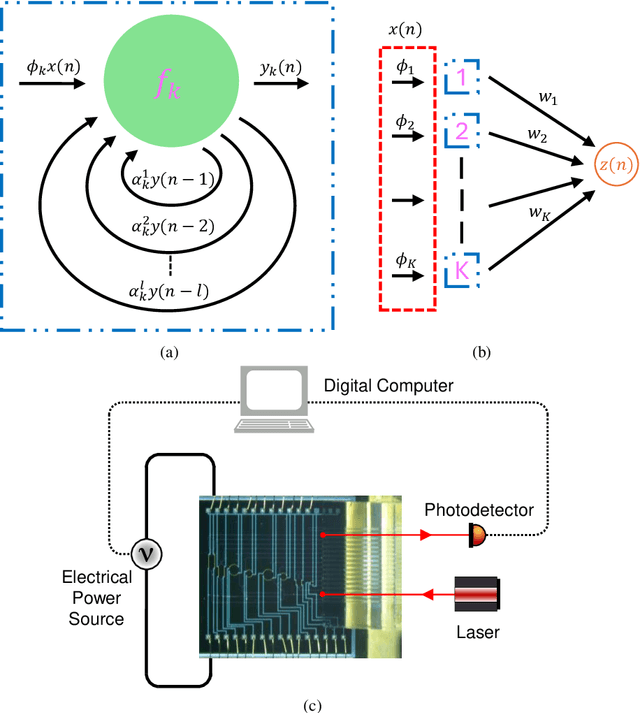

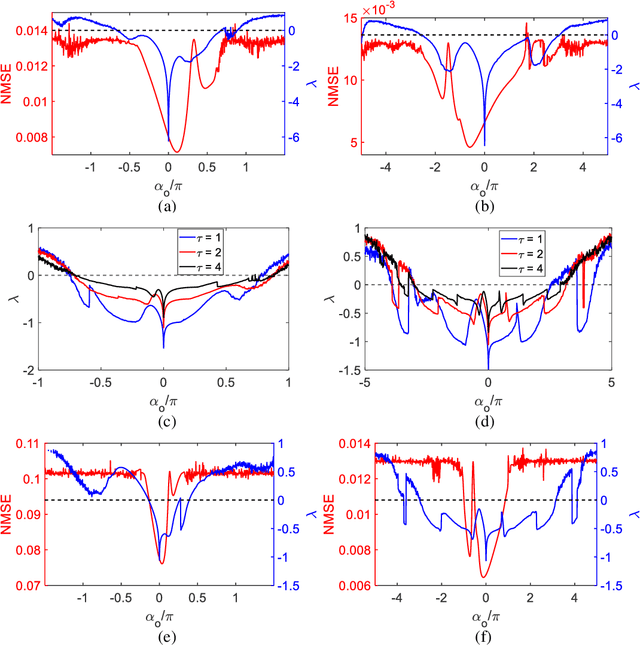

Abstract:Physical Reservoir Computing (PRC) is a recently developed variant of Neuromorphic Computing, where a pertinent physical system effectively projects information encoded in the input signal into a higher-dimensional space. While various physical hardware has demonstrated promising results for Reservoir Computing (RC), systems allowing tunability of their dynamical regimes have not received much attention regarding how to optimize relevant system parameters. In this work we employ hybrid photonic-electronic (HPE) system offering both parallelism inherent to light propagation, and electronic memory and programmable feedback allowing to induce nonlinear dynamics and tunable encoding of the photonic signal to realize HPE-RC. Specifically, we experimentally and theoretically analyze performance of integrated silicon photonic on-chip Mach-Zehnder interferometer and ring resonators with heaters acting as programmable phase modulators, controlled by detector and the feedback unit capable of realizing complex temporal dynamics of the photonic signal. Furthermore, we present an algorithm capable of predicting optimal parameters for RC by analyzing the corresponding Lyapunov exponent of the output signal and mutual information of reservoir nodes. By implementing the derived optimal parameters, we demonstrate that the corresponding resulting error of RC can be lowered by several orders of magnitude compared to a reservoir operating with randomly chosen set of parameters.
Monolithic Silicon-Photonics Linear-Algebra Accelerators Enabling Next-Gen Massive MIMO
Feb 13, 2024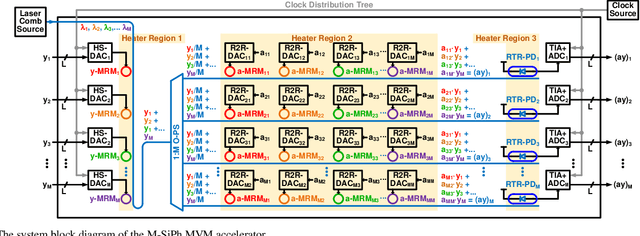

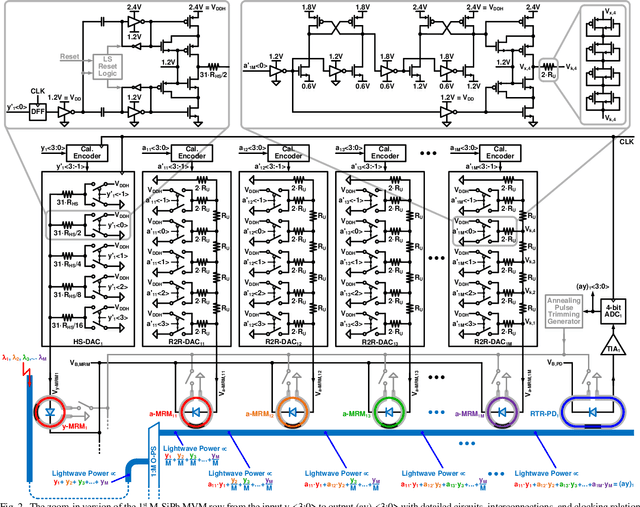

Abstract:A system-on-chip (SoC) photonic-electronic linear-algebra accelerator with the features of wavelength-division-multiplexing (WDM) based broadband photodetections and high-dimensional matrix-inversion operations fabricated in advanced monolithic silicon-photonics (M-SiPh) semiconductor process technology is proposed to achieve substantial leaps in computation density and energy efficiency, including realistic considerations of energy/area overhead due to electronic/photonic on-chip conversions, integrations, and calibrations through holistic co-design methodologies to support linear-detection based massive multiple-input multiple-output (MIMO) decoding technology requiring the inversion of channel matrices and other emergent applications limited by linear-algebra computation capacities.
Multirate Spectral Domain Optical Coherence Tomography
Feb 28, 2023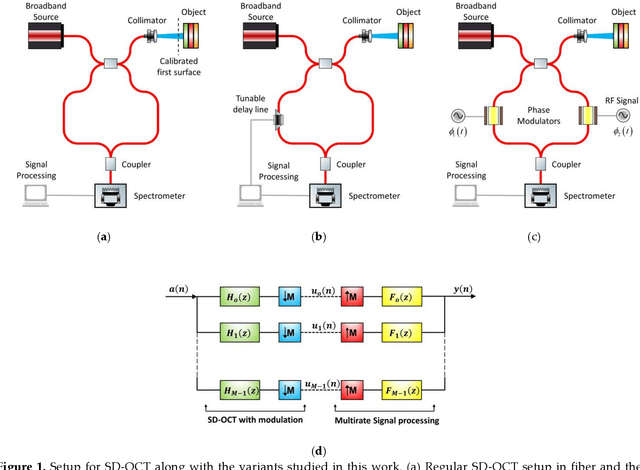
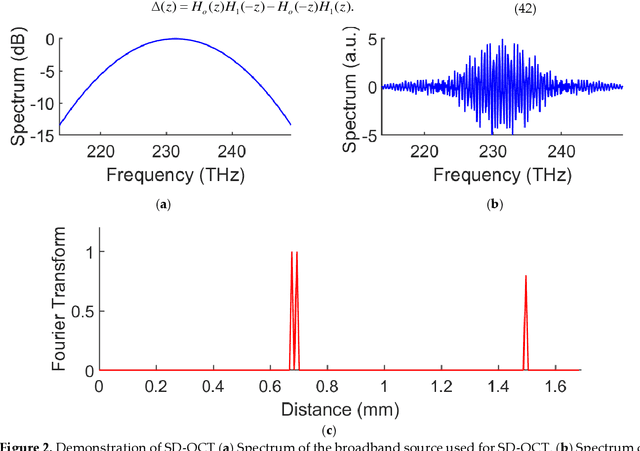
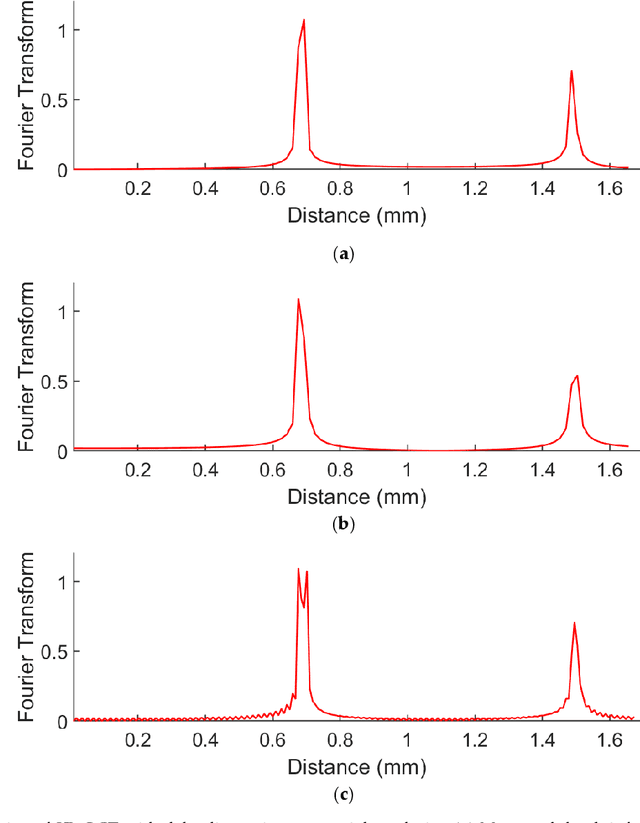
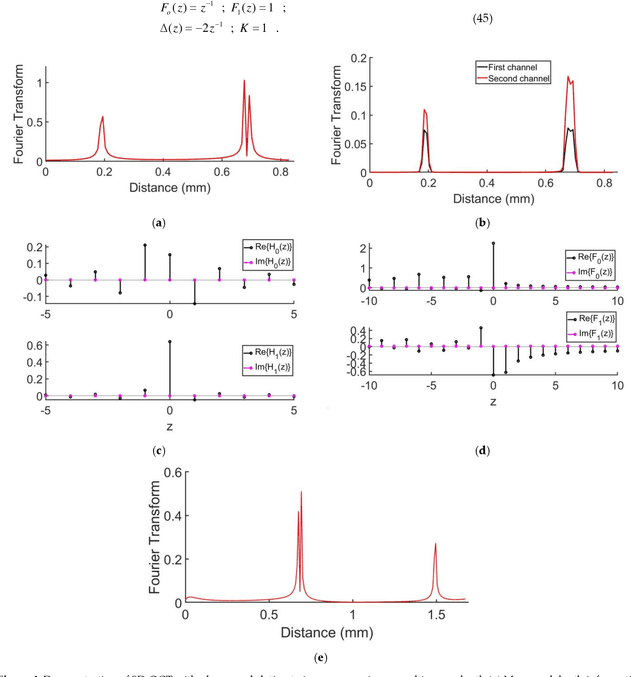
Abstract:Optical coherence tomography is state-of-the-art in non-invasive imaging of biological structures. Spectral Domain Optical Co-herence Tomography is the popularly used variation of this technique, but its performance is limited by the bandwidth and res-olution of the system. In this work, we theoretically formulate the use of phase modulators and delay lines to act as filters on the tomography system and scan multiple channels. Various channels are then combined in a digital computer using filter bank theory to improve the sampling rate . The combination of multiple channels allows for increasing the axial resolution and maximum unambiguous range beyond the Nyquist limit. We then simulate the multirate spectral domain optical coherence tomography with 2 channels. We show that a single delay line can improve the axial resolution while a pair of phase modulators can improve the maximum unambiguous range of the system. We also show the use of multirate filter banks to carry out this process. Thus, by using a few extra components in the spectral domain optical coherence tomography, its performance can be increased manifold de-pending on the number of channels used. The extra cost is the time taken to perform the extra scans that is trivial for stationary objects like biological tissues.
Quantum materials for energy-efficient neuromorphic computing
Apr 04, 2022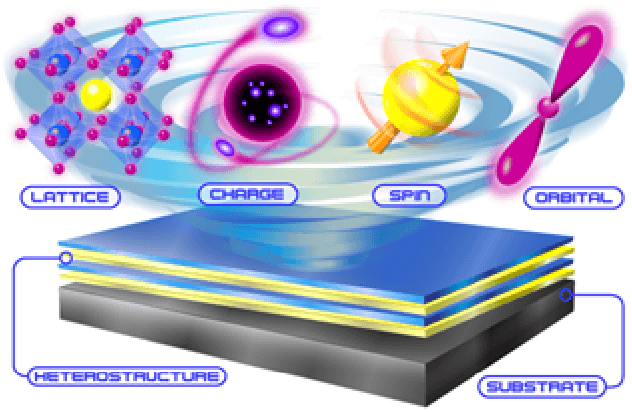
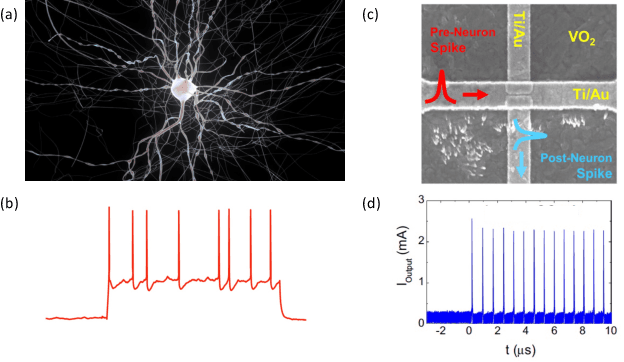
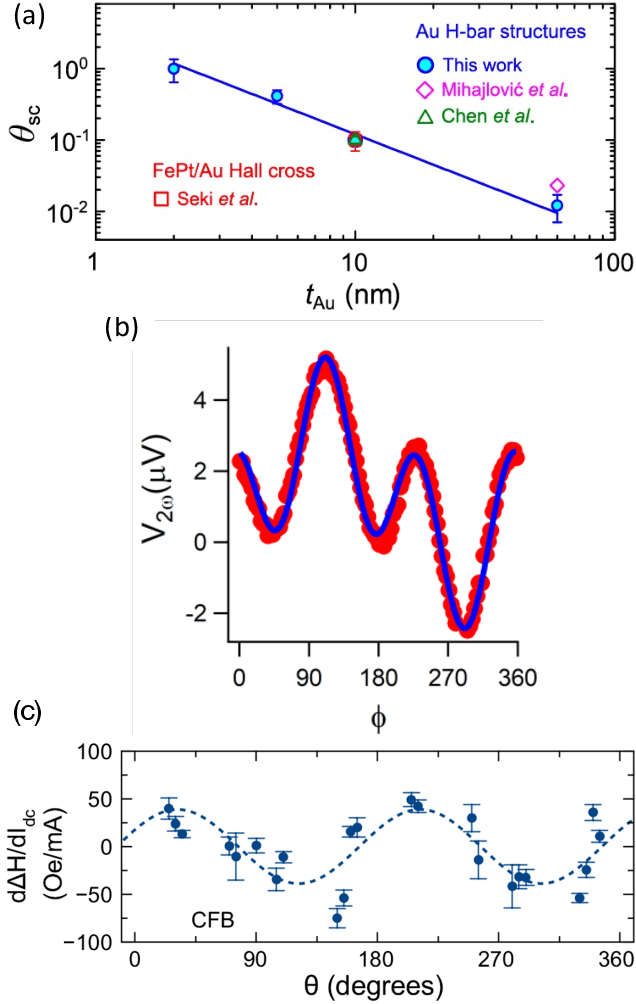
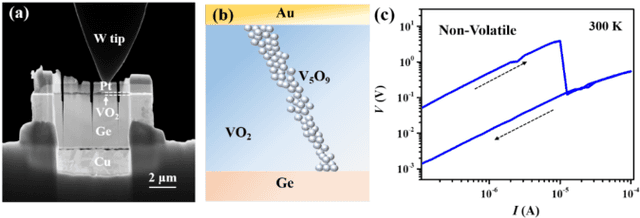
Abstract:Neuromorphic computing approaches become increasingly important as we address future needs for efficiently processing massive amounts of data. The unique attributes of quantum materials can help address these needs by enabling new energy-efficient device concepts that implement neuromorphic ideas at the hardware level. In particular, strong correlations give rise to highly non-linear responses, such as conductive phase transitions that can be harnessed for short and long-term plasticity. Similarly, magnetization dynamics are strongly non-linear and can be utilized for data classification. This paper discusses select examples of these approaches, and provides a perspective for the current opportunities and challenges for assembling quantum-material-based devices for neuromorphic functionalities into larger emergent complex network systems.
Imaging with Rays: Microscopy, Medical Imaging, and Computer Vision
Feb 11, 2014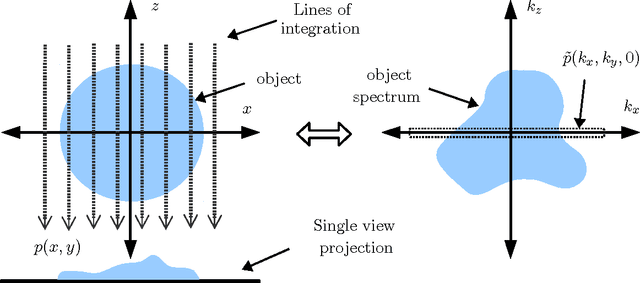

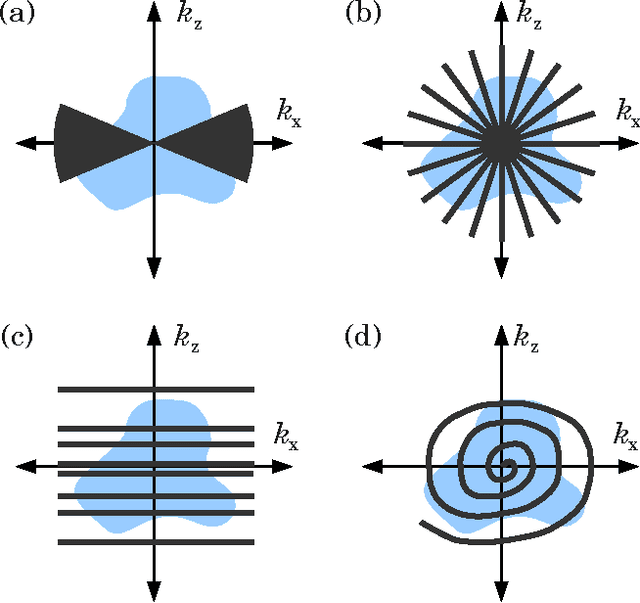
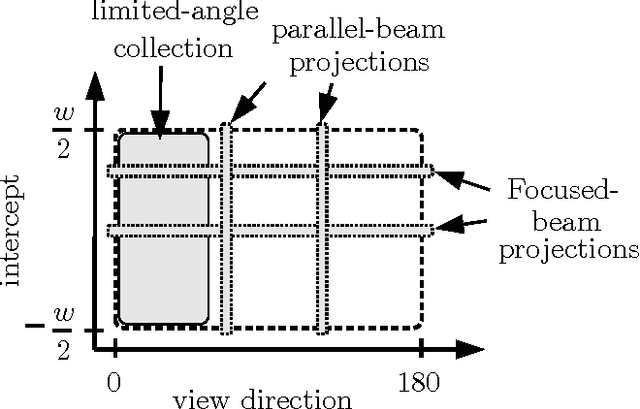
Abstract:In this paper we broadly consider techniques which utilize projections on rays for data collection, with particular emphasis on optical techniques. We formulate a variety of imaging techniques as either special cases or extensions of tomographic reconstruction. We then consider how the techniques must be extended to describe objects containing occlusion, as with a self-occluding opaque object. We formulate the reconstruction problem as a regularized nonlinear optimization problem to simultaneously solve for object brightness and attenuation, where the attenuation can become infinite. We demonstrate various simulated examples for imaging opaque objects, including sparse point sources, a conventional multiview reconstruction technique, and a super-resolving technique which exploits occlusion to resolve an image.
 Add to Chrome
Add to Chrome Add to Firefox
Add to Firefox Add to Edge
Add to Edge